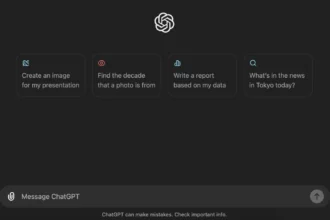Are you tired of the limitations of traditional logistic regression? Do you find yourself longing for a more versatile and powerful classification algorithm? Look no further, because in this blog post, we’re diving into the fascinating world of logistic regression multiclass. Yes, you heard it right – we’re taking logistic regression to a whole new level! Whether you’re a data scientist, a machine learning enthusiast, or just someone curious about the wonders of statistical modeling, this article is for you. Get ready to unlock the secrets of extending logistic regression for multiclass classification, understand the magic behind multinomial logistic regression, and discover the true power of multivariate logistic regression. So, fasten your seatbelts and join us on this thrilling journey into the realm of logistic regression multiclass. Trust us, you won’t want to miss it!
Table of Contents
ToggleUnderstanding Logistic Regression Multiclass
Traditionally, logistic regression has been the go-to model for dissecting binary outcomes. It’s like a digital switch, flipping between a firm ‘yes’ or ‘no’. But as the realms of data expand, we encounter landscapes that are not merely black and white. They burst with a spectrum of categories, demanding a more nuanced approach. Enter the realm of logistic regression multiclass, also known as multinomial logistic regression, ready to embrace the complexity of multiple classes.
Imagine logistic regression as an adept storyteller, one that has been narrating tales of two distinct outcomes. Now, it learns to weave more intricate stories where characters are not confined to a dual existence but flourish across diverse states. This is the essence of logistic regression when it steps beyond binary classification, evolving to embrace a multiclass world.
| Fact | Explanation |
|---|---|
| Logistic Regression Multiclass | Extension of binary logistic regression to handle multiple classes. |
| One-vs-rest Approach | Transforms multiclass problem into multiple binary classification problems. |
| Multinomial Logistic Regression | Used when the output variable is discrete but in more than two classes. |
| Difference to Logistic Regression | Multinomial is more general; not restricted to two outcome categories. |
Indeed, logistic regression can and does handle multiclass classification. It steps up from its binary roots through adaptations such as the one-vs-rest strategy. This clever technique essentially creates a series of binary classification problems from a single multiclass problem, enabling logistic regression to predict multiple categories with ease.
However, the true power lies in multinomial logistic regression. This variant is perfectly tailored for scenarios where the outcome variable flirts with three or more categories. Unlike its binary sibling, it doesn’t force the world into two boxes; instead, it opens up a palette of possibilities, apt for the categorical richness of the real world.
Understanding the difference between logistic regression and its multinomial counterpart is akin to recognizing the distinction between a light switch and a color wheel. While the former toggles between on and off, the latter spins around a continuum of colors, offering a hue for every nuance. Multinomial logistic regression stands as this color wheel in the statistical landscape, providing a method to classify subjects based on various predictor variables.
As we delve deeper into the intricacies of logistic regression for multiclass classification, it’s imperative to appreciate the sophistication it brings to predictive analytics. It’s no longer just about ‘yes’ or ‘no’; it’s about embracing the ‘maybes’ and the ‘perhaps’, the ‘reds’, ‘blues’, and ‘greens’—a full array of outcomes that better represent the complexity of our data-driven world.
Extending Logistic Regression for Multiclass Classification
Imagine you’re at a crossroads, and instead of two, there are several paths to choose from. This is akin to the challenge faced in multiclass classification problems, where the decision isn’t merely binary. To navigate this complexity, logistic regression evolves through the one-vs-rest technique, which expands its prowess beyond the binary realm. This ingenious strategy is akin to breaking down a wall into smaller bricks, tackling each part with focus and precision.
In a world brimming with categories and labels, the one-vs-rest approach stands as a beacon of simplicity. When presented with a 3-class classification puzzle, for instance, this method shines by converting it into a trio of binary classification tasks. Each class is pitted against all others, one at a time, allowing logistic regression to flex its muscles on familiar ground. This One Vs All method isn’t just a nifty trick; it’s a systematic approach that molds itself to the intricacies of the data in logistic regression.
Here’s the crux: for every class, a separate binary logistic regression classifier is trained. The target class for each classifier is the one we’re focusing on, while all other classes are considered the alternative. This generates a lineup of classifiers, each an expert in identifying its assigned class from the rest.
Let’s illustrate this with a colorful example. Consider a classifier designed to identify ripe fruits. In a binary world, it’s apples versus oranges. But introduce bananas into the mix, and the one-vs-rest approach divides the task into three separate contests: apples against all, oranges against all, and bananas against all. Each fruit gets its moment in the spotlight, ensuring that no contender is overlooked.
What truly elevates the one-vs-rest technique is its adaptability. It doesn’t matter if you’re dealing with a handful of classes or a hundred; the method scales gracefully, preserving its effectiveness. It’s the secret sauce that enables logistic regression to cater to the vibrant landscape of multiclass classification, giving it a seat at the table alongside more complex algorithms.
Employing this methodology, logistic regression becomes an even more versatile tool in the machine learning toolbox. It’s like having a Swiss Army knife when you’re out camping; you’re prepared for more than just a binary yes or no, but a whole range of possibilities. Thus, the one-vs-rest technique is not just an extension; it’s a transformation that multiplies the utility of logistic regression in the rich tapestry of multiclass scenarios.
As we unwrap the layers of logistic regression’s capabilities, we’re not just talking about a statistical method; we’re exploring a narrative of adaptation and ingenuity. By the end of this journey, one thing becomes clear: with the right techniques, even the most straightforward tools can be tailored to meet the demands of a complex, multifaceted world.
Unveiling Multinomial Logistic Regression
Imagine standing at a crossroads, where paths diverge in multiple directions—each leading to a distinct destination. This is the scenario that multinomial logistic regression addresses in the realm of statistical analysis. Unlike its cousin, binary logistic regression, which contemplates a simple ‘yes’ or ‘no’ decision, multinomial logistic regression embraces the complexity of multiple outcomes. It is the statistical GPS for navigating through the intricate landscape where our predictive journey has more than two possible endings.
When should one embark on this journey with multinomial logistic regression? The answer lies in the nature of the outcome variable. When the target of our prediction is a nominal variable teeming with multiple unordered categories—like the type of cuisine preferred by an individual or the brand of smartphone a consumer might buy—multinomial logistic regression steps onto the stage. It’s an analytical spotlight that can handle both continuous and categorical independent variables, showcasing the intricate dance between predictors and outcomes.
But what truly sets multinomial logistic regression apart from its binary counterpart? It lies in the depth of its analysis. Binary logistic regression, as the name implies, restricts us to two categories. It can tell us if a student passes or fails an exam, but not whether they will achieve a grade of A, B, C, or D. Multinomial logistic regression, on the other hand, can gracefully leap over this hurdle, allowing us to predict a range of categorical outcomes with precision.
Why embrace the complexity of multivariate logistic regression? Consider the richness of our world, teeming with variables of every hue and shade. In the multidimensional space of predictors, multivariate logistic regression is our guide. It allows us to incorporate a kaleidoscope of predictor variables to unveil those that most influentially sway the predicted outcome. Whether we are exploring the impact of socioeconomic status, educational background, or even the more subtle nuances of human behavior, multivariate logistic regression lays bare the relationships within our data.
As we continue to journey through the landscape of logistic regression, the versatility and power of these models become increasingly apparent. They are not just tools but lanterns in the dark, illuminating the paths between cause and effect. And as we prepare to delve deeper into the differences between logistic regression and its multinomial sibling, we carry with us the understanding that our predictive models are as diverse and nuanced as the subjects they study.
With a firm grasp on the steering wheel of multinomial logistic regression, we are now ready to navigate the twists and turns of multiclass classification with confidence, ready to explore the nuances that separate it from binary logistic regression in our ongoing narrative.
Difference Between Logistic Regression and Multinomial Logistic Regression
Imagine standing at a crossroads where each path leads to a distinct destination. This metaphor resonates with the statistical journey one embarks on when choosing between logistic regression and multinomial logistic regression. While both methods guide us through the terrain of categorical data analysis, they cater to different scenarios, much like choosing a path based on your final destination.
At its core, logistic regression is akin to a binary crossroad—a decision between two clear-cut choices, such as ‘yes’ or ‘no’, ‘pass’ or ‘fail’. It is the statistical equivalent of a coin toss, albeit one that is weighted by a set of predictor variables. This method shines when the outcome variable is dichotomous, meaning it has only two possible categories.
On the other hand, multinomial logistic regression is the statistical tool of choice when the paths diverge into multiple directions. It is an extension of logistic regression that does not shy away from the complexity of dealing with multiple, unordered outcomes. The dependent variable here is nominal with more than two categories, resembling a situation where you must choose not between two, but among several outcomes—like selecting a flavor from an array of ice cream options.
The versatility of multinomial logistic regression is evident when dealing with a nominal variable such as ‘type of transportation’, where the categories could include ‘car’, ‘train’, ‘bicycle’, and ‘walking’, with no inherent order to those choices. This model welcomes the challenge of predicting which mode of transportation a person might choose based on various factors such as distance, cost, and environmental concern.
While logistic regression could be constrained by the dichotomy of its outcomes, multinomial logistic regression revels in the richness of life’s palette, offering a more granular analysis of situations where outcomes are varied and vibrant. Its ability to incorporate a multitude of independent variables—be they continuous or categorical—allows for a nuanced understanding of the factors at play.
Choosing between these two statistical methods hinges on the nature of the dependent variable. If the outcome of interest is binary, logistic regression is your go-to. However, when the outcome blooms into a spectrum of possibilities, multinomial logistic regression steps in to embrace the complexity.
In summary, while logistic regression provides a solid foundation for binary classification, multinomial logistic regression expands the horizon, accommodating the colorful complexity of multiclass categorization. Both methods are powerful in their own right, each suited to navigating the landscapes of categorical outcomes with precision and insight.
As we continue to weave through the fabric of categorical data analysis, let us now turn our gaze to the power of multivariate logistic regression, where the tapestry becomes even more intricate and the patterns more diverse.
The Power of Multivariate Logistic Regression
Imagine standing at the crossroads of a bustling city, deciphering the flow of traffic to find the quickest route to your destination. Much like an urban explorer, the data scientist relies on multivariate logistic regression to navigate through the complex intersections of data, identifying the pathways that lead to impactful insights. In this statistical metropolis, the lights are always green for the inclusion of diverse predictor variables—be they categorical, ordinal, or continuous.
Why is this important? Because in the realm of data analysis, the ability to incorporate various types of data into a single model is not just convenient—it is crucial. Multivariate logistic regression shines its analytical headlights on a series of predictor variables, illuminating the ones that exert the most influence on a specific outcome. This technique does more than just predict; it reveals the intricate dance between variables, offering a choreography of probabilities that define the likelihood of different outcomes.
Consider the challenge of predicting patient readmissions in a hospital. Variables such as age, medical history, and treatment methods—each with their distinct data levels—converge to form a multifaceted picture. A multivariate logistic regression model treats this tapestry of variables with finesse, teasing out the threads that might predict readmission risks with the highest accuracy. This is the power of bringing multiple predictors into the conversation, a symphony of data that speaks volumes more than any solo predictor ever could.
In the logistic regression multiclass scenario, where outcomes span beyond the binary, the narrative grows more complex. Here, the model becomes a storyteller that doesn’t just tell us whether an event will occur but explores the various endings to the story. It’s a tale of multiple outcomes, each with its own set of influencing factors. Armed with this knowledge, decision-makers can strategize with a level of precision that was once the stuff of statistical legend.
So, when does a data scientist choose this powerful ally? Whenever the dependent variable’s categories resemble the vibrant diversity of a bustling market rather than a simple yes/no dichotomy. This is when multinomial logistic regression steps in, broadening the horizon to accommodate the richness of real-world scenarios.
And what about the distinction between logistic regression and its multinomial cousin? While both predict categorical outcomes, the latter embraces the full spectrum of categories without the need for them to follow a specific order. It’s the difference between predicting whether it will rain or not, and forecasting the weather in all its varied possibilities—sunny, cloudy, rainy, or snowy.
As we continue our journey through the data landscape, remember that multivariate logistic regression is more than a method—it’s a gateway to understanding the complex interplay of variables in our world. And for the data scientist, it’s an indispensable tool in the quest to turn raw data into meaningful stories with actionable insights.
Q: Can logistic regression be used for multiclass classification?
A: By default, logistic regression is limited to two-class classification problems. However, extensions like one-vs-rest can allow logistic regression to be used for multiclass classification problems.
Q: What are some other names for multiclass logistic regression?
A: Multiclass logistic regression is also known as multinomial logistic regression, polytomous LR, softmax regression, multinomial logit (mlogit), the maximum entropy (MaxEnt) classifier, and the conditional maximum entropy model.
Q: Is logistic regression only used for classification?
A: Although logistic regression is commonly used for binary classification, it can be extended to solve multiclass classification problems. This is known as multinomial logistic regression, where the output variable is discrete in three or more classes with no natural ordering.
Q: Can logistic regression handle more than two categories?
A: Yes, multinomial logistic regression is a simple extension of binary logistic regression that allows for more than two categories of the dependent or outcome variable.





